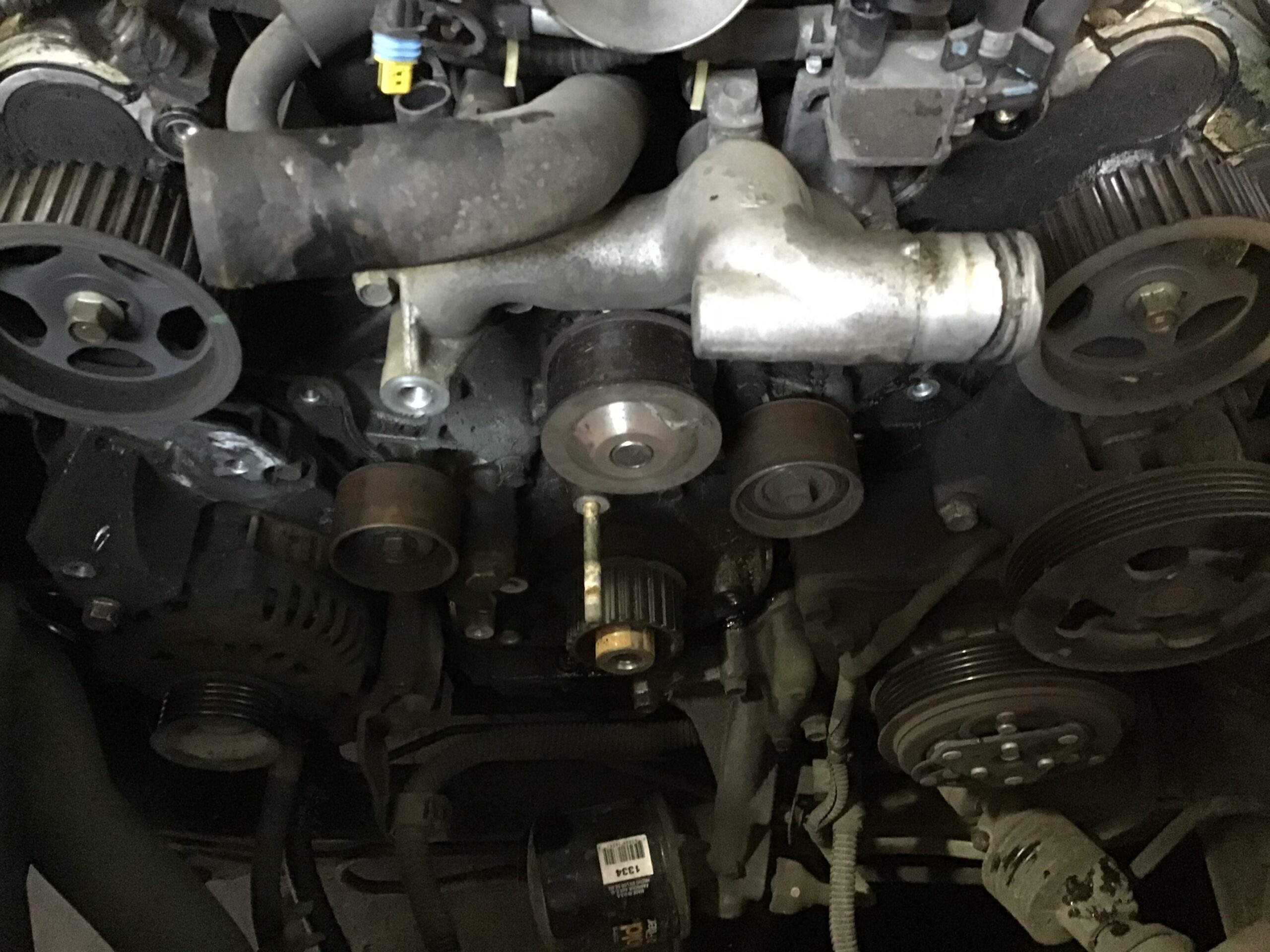Some engines employ a timing belt, which is a toothed belt used to drive the camshafts on overhead cam engines. These belts are built to be pretty tough and to last for thousands of miles. However, they do wear out and if not replaced at manufacturer-specified intervals will eventually break.
Before the timing belt breaks, it will often develop cracks in the rubber on its backside. This is a definite sign that the timing belt needs to be replaced. Some manufacturers suggest timing belt replacement as frequently as every 60,000 miles. Most, however, recommend replacement at 90,000 or 100,000 mile intervals.
When a timing belt breaks, the engine stops running immediately and the vehicle must be towed to the shop for service. On some vehicles this is the worst it gets, but on others, timing belt breakage will allow the pistons to collide with open valves inside the cylinders, bending the valves and causing a much more expensive repair than the timing belt replacement itself. In this instance, the heads now have to be removed to replace the bent valves. These engines are known as interference engines.
On most modern engines there are other components that are driven by or employed in the timing belt system like water pump, idler pulleys, tensioners, and crankshaft and camshaft seals. These can wear out as well. Since the timing belt replacement job involves a significant amount of labor, it’s best to replace all wear items involved at the same time to prevent having to do the same work again when another component in the system fails.
If you’re not sure if your car’s engine has a timing belt or if you don’t know when it was last replaced, our service team would be happy to help you with these questions as well as provide you with a quote for timing belt and/or component replacement if needed. Give us a call or ask us about it here.


0 Comments